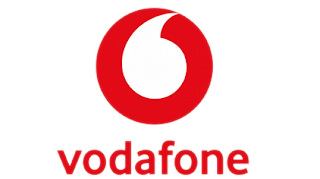 Maruti Suzuki India Limited, formerly known as Maruti Udyog Limited, is an automobile manufacturer in India. It is a 56.21%-owned subsidiary of Japanese automobile and motorcycle manufacturer Suzuki Motor Corporation. As of January 2017, it had a market share of 51% of the Indian passenger car market. Maruti Suzuki manufactures and sells popular cars such as the Ciaz, Ertiga, Wagon R, Alto, Swift, Celerio, Swift Dzire, Omni, Baleno and Baleno RS, Ignis. The company is headquartered at New Delhi. In February 2012, the company sold its ten millionth vehicle in India.
Maruti Suzuki India Limited, formerly known as Maruti Udyog Limited, is an automobile manufacturer in India. It is a 56.21%-owned subsidiary of Japanese automobile and motorcycle manufacturer Suzuki Motor Corporation. As of January 2017, it had a market share of 51% of the Indian passenger car market. Maruti Suzuki manufactures and sells popular cars such as the Ciaz, Ertiga, Wagon R, Alto, Swift, Celerio, Swift Dzire, Omni, Baleno and Baleno RS, Ignis. The company is headquartered at New Delhi. In February 2012, the company sold its ten millionth vehicle in India.Tata Motors Limited (formerly TELCO, short for Tata Engineering and Locomotive Company) headquartered in Mumbai, is an Indian multinational automotive manufacturing company and a member of the Tata Group. Its products include passenger cars, trucks, vans, coaches, buses, sports cars, construction equipment and military vehicles. Tata Motors has been ranked 5th in 2015 Responsible Business Rankings developed by IIM Udaipur.
Tata Motors has auto manufacturing and assembly plants in Jamshedpur, Pantnagar, Lucknow, Sanand, Dharwad, and Pune in India, as well as in Argentina, South Africa, Great Britain and Thailand. It has research and development centres in Pune, Jamshedpur, Lucknow, and Dharwad, India and in South Korea, Great Britain and Spain. Tata Motors' principal subsidiaries purchased the English premium car maker Jaguar Land Rover (the maker of Jaguar and Land Rover cars) and the South Korean commercial vehicle manufacturer Tata Daewoo. Tata Motors has a bus-manufacturing joint venture with Marcopolo S.A. (Tata Marcopolo), a construction-equipment manufacturing joint venture with Hitachi (Tata Hitachi Construction Machinery), and a joint venture with Fiat Chrysler which manufactures automotive components and Fiat Chrysler and Tata branded vehicles.
Founded in 1945 as a manufacturer of locomotives, the company manufactured its first commercial vehicle in 1954 in a collaboration with Daimler-Benz AG, which ended in 1969. Tata Motors entered the passenger vehicle market in 1991 with the launch of the Tata Sierra, becoming the first Indian manufacturer to achieve the capability of developing a competitive indigenous automobile. In 1998, Tata launched the first fully indigenous Indian passenger car, the Indica, and in 2008 launched the Tata Nano, the world's cheapest car. Tata Motors acquired the South Korean truck manufacturer Daewoo Commercial Vehicles Company in 2004 and purchased Jaguar Land Rover from Ford in 2008.






























